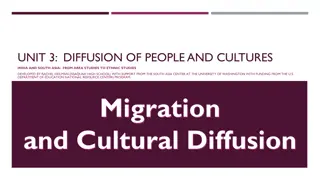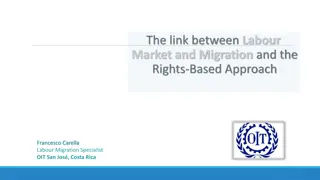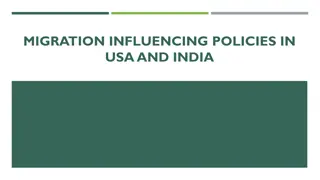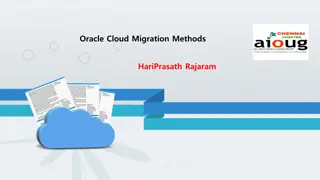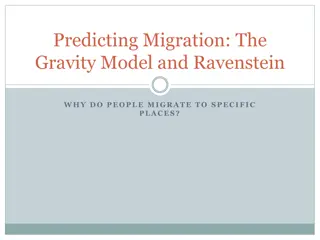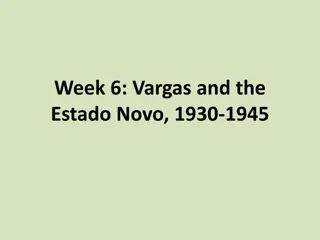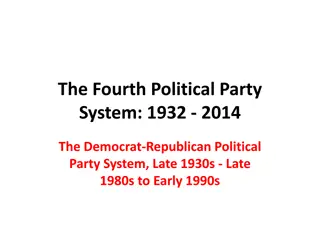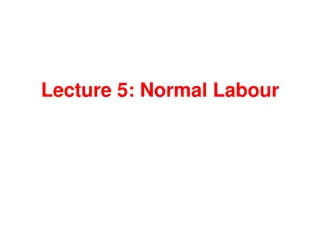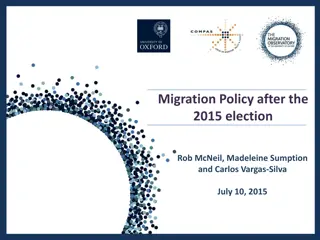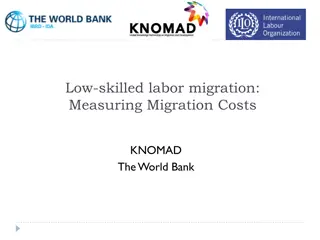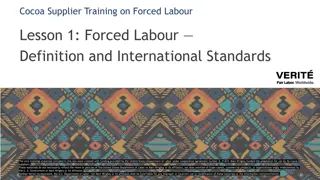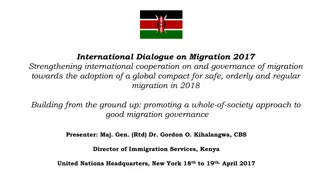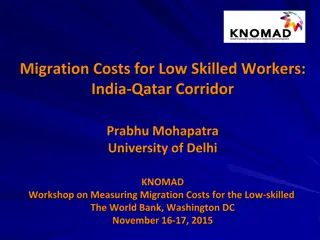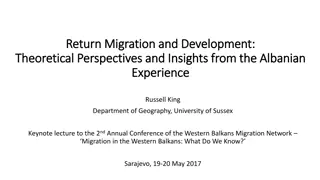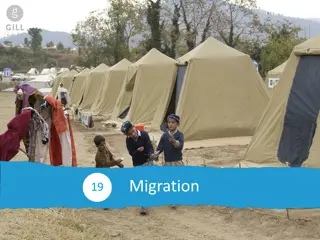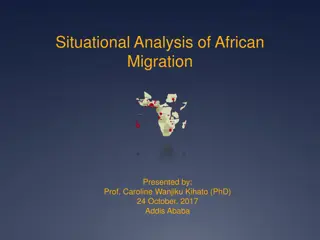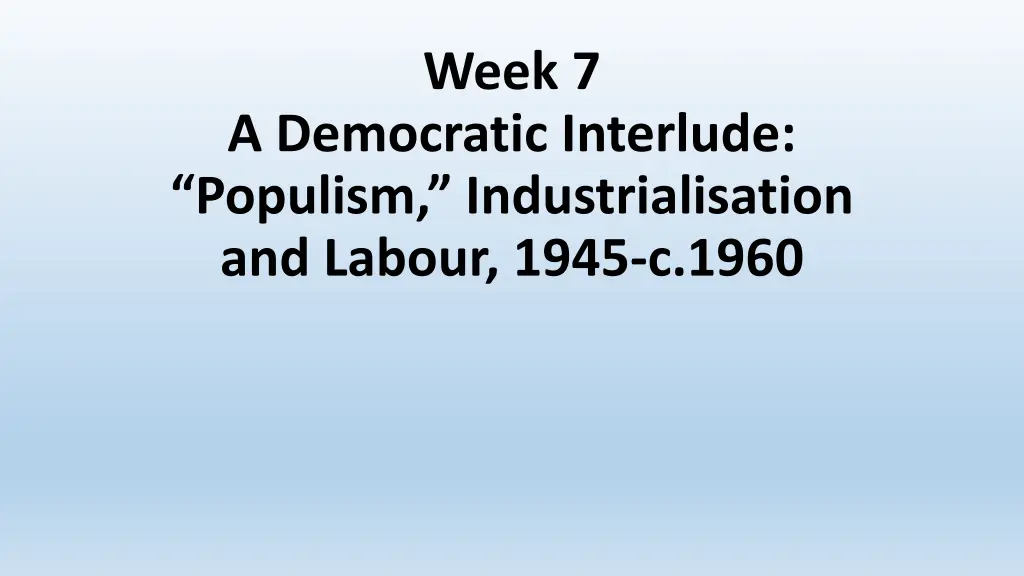
Brazilian Democratic Interlude: Populism, Industrialization, and Labour, 1945-1960
Explore the democratic interlude in Brazil post-World War II, focusing on the return of Vargas as a populist democrat, the significance and pitfalls of populism, organized labor, industrialization, uneven growth, internal migration, the 1945 elections, a new constitution in 1946, and Latin American post-war electoral politics.
Download Presentation

Please find below an Image/Link to download the presentation.
The content on the website is provided AS IS for your information and personal use only. It may not be sold, licensed, or shared on other websites without obtaining consent from the author. If you encounter any issues during the download, it is possible that the publisher has removed the file from their server.
You are allowed to download the files provided on this website for personal or commercial use, subject to the condition that they are used lawfully. All files are the property of their respective owners.
The content on the website is provided AS IS for your information and personal use only. It may not be sold, licensed, or shared on other websites without obtaining consent from the author.
E N D
Presentation Transcript
Week 7 A Democratic Interlude: Populism, Industrialisation and Labour, 1945-c.1960
This week Vargas return as populist democrat Populism : significance and pitfalls of the term Populism and organised labour Industrialisation, uneven growth Internal migration and its implications for labour and culture
Two military presidential candidates Two military presidential candidates Eurico Gaspar Dutra (PSD pro- Vargas party) Brigadier Eduardo Gomes (UDN anti-Vargas party)
Brigadeiro Brigadeiro sweets, named after Brigadier sweets, named after Brigadier Eduardo Gomes (UDN candidate in 1945) Eduardo Gomes (UDN candidate in 1945)
The 1945 election The 1945 election 1945 election: 6.7 million votes cast three times as many as in 1930 Politics still corrupt, but expanding urban electorate no longer so manageable - hence the politics of populism Dutra wins (3.2M votes); Gomes gets 2M; communists get 0.5M
A new constitution: 1946 A new constitution: 1946 Initially Dutra governs under old authoritarian constitution of Estado Novo Constitutional Assembly drafts a new constitution, 1946. Brazil s fifth constitution (others are 1824, 1889, 1934, 1937) Full political freedom for first time: Communist Party legal (briefly) Restoration of rights and freedoms lost under Estado Novo constitution Powers of the presidency are REDUCED Powers of states are extended again Elections held are relatively more free and fair than before.
Latin American post-war electoral politics Latin America comes in on American side; supposedly support democracy over dictatorship Defence & economic pacts with US Lat Am govts keen to show their democratic credentials So former authoritarians go to the polls Vargas in Brazil; Fulgencio Batista in Cuba; and Juan Per n in Argentina
Populism the phenomenon whereby a politician tries to win power by courting mass popularity with sweeping promises of benefits and concessions to large interest- groups, usually drawn from the lower classes. Populist leaders lack a coherent programme for social change or economic reform, but try to manipulate the existing system in order to lavish favours on underprivileged sectors in return for their support (Edwin Williamson)
Populism: a problematic term? Way of dismissing working-class political aims? Politicians aim at manipulation, but doesn t mean this is all that is going on Need to take working class political activity seriously
e.g. Brazilian labour history is not just about manipulation by Vargas Labour movement long pre-dated Vargas Activists avoided Vargas-controlled unions during Estado Novo (-37- 45) but labour movement later decides to work WITH Vargas in democratic period Organised labour pushes him to fulfil promises to workers
Working people in So Paulo were not mobilized from above by politicians; they gave populists their votes in exchange for the populists support of their demands. Joel Wolfe, S o Paulo and the Rise of Brazil s Industrial Working Class (1993), 194
Dutra 1945-50 Fairly CONSERVATIVE no major industrialisation initiatives; reliance on coffee exports difficult post-war economic situation: trade restored, Latin America flooded with imported consumer goods from abroad. High cost of living; major STRIKES IN S O PAULO 1947; widespread unrest Dutra outlaws Communist Party (PCB) PTB (founded by Vargas) replaces Communists as major force on Left
Vargas the democrat Courts elite power brokers: fazendeiros (planters), industrialists, state political bosses, MILITARY POPULIST promises to the masses about working conditions and salaries Election of 1950: wins with nearly 50% of vote.
Industrialisation and development Major industrialisation during Vargas second term Signature institutions to promote development and industrialisation: the National Bank for Economic Development (BNDES) state enterprises in oil (Petrobr s) and electricity (Eletrobr s) all still exist today
Downfall and suicide * POLARISATION OF POLITICAL POSITIONS: exacerbated by Cold War Petrobr s criticised both by Left and by Right US and conservative military turn on Vargas. Economic woes: inflation; debt; IMF pressures for STABILIZATION PROGRAMME. Meanwhile Vargas takes a NATIONALIST turn Strike in SP, 1953: 300,000 people. Finance minister, Jo o Goulart, implements a 100% hike in the minimum wage 24 August 1954: Vargas commits suicide
More wealth and more poverty More wealth and more poverty Fast but very unequal economic growth Greater income inequality overall: Industrial workers get paid more, rural workers don t; south-east benefits disproportionately Overall in Brazil, life expectancy is 53 by 1961. But in the poor northeastern state of Rio Grande do Norte, it s only 40. Infant mortality in Brazil overall by early 60s is 145 in 1,000; In RGN, it s 420 in 1,000 Nearly 40% of income goes to top 10% of population; only 25% goes to the bottom 3/5 of the population.
Migration and unplanned urban expansion Migration and unplanned urban expansion Major internal migration, to the cities of the South-East, especially S o Paulo, and from rural to urban areas Rapid, uncontrolled urbanisation in south-eastern cities Foreign business executives describe S Paulo as Latin America s number 1 boom city by 1950. Population of 2.2 million. One new building in SP every 50 minutes! Causes social problems: favelas and slum housing; no sanitary provision or basic quality of life for these new arrivals; not all arrivals find jobs Populism is partly a political response to enlarged urban populations Migrants discriminated against; but also bring culture of north-eastern sert o (backlands) to the south-east
Photo Tour of Northeast Market - Feira de Sao Cristovao - Rio de Janeiro Photo Tour of Northeast Market - Feira de Sao Cristovao - Rio de Janeiro Pictours of Rio - Feira do Nordeste Photo Tour of Northeast Market - Feira de Sao Cristovao - Rio de Janeiro Photo Tour of Northeast Market - Feira de Sao Cristovao - Rio de Janeiro
Luiz Gonzaga, Brazils most famous north-eastern musician http://www.google.co.uk/images?q=tbn:pezsGpkKiGpZlM::3.bp.blogspot.com/_IQxAkm-GweQ/TFDmeKwoE2I/AAAAAAAAAkI/25JlJ9o5QZ8/s320/LUIZ%252BGONZAGA.jpgt=1h=94w=95usg=__h457c4i4ZpUXy4pKgdr3LBgLogI=
Two famous nordestinos: Gilberto Gil, musician and former Minister of Culture; and former President Lula http://upload.wikimedia.org/wikipedia/commons/thumb/1/19/Luiz_In%C3%A1cio_Lula_da_Silva_and_GIlberto_Gil.jpg/220px-Luiz_In%C3%A1cio_Lula_da_Silva_and_GIlberto_Gil.jpg
Seminar questions What problems did rapid industrialisation bring to Brazil from the 1940s to the 1960s? How successful were the demands of Brazilian organised labour in the middle years of the twentieth century? How did those demands interact with the state? From the perspective of organised labour, did 1945-54 look different from 1930-45? How? Why? How did internal migration shape urban life and working-class politics in the Brazilian southeast?
Seminar readings John D. French, The Brazilian workers' ABC: class conflict and alliances in modern S o Paulo (1992), Ch 5, Popular Getulismo and Working Class Organization, 132-151 [on library scans page] Joel Wolfe, Working women, working men: S o Paulo and the rise of Brazil's industrial working class, 1900-1955 (1993), Chapter 3, Class Struggle versus Concilia o: the Estado Novo, 1935-42, pp 70-93. [on library scans page] A suggestion for further reading: Paulo Fontes, Migration and the Making of Industrial Sao Paulo. Duke University Press, 2016. [E-book at Library]



